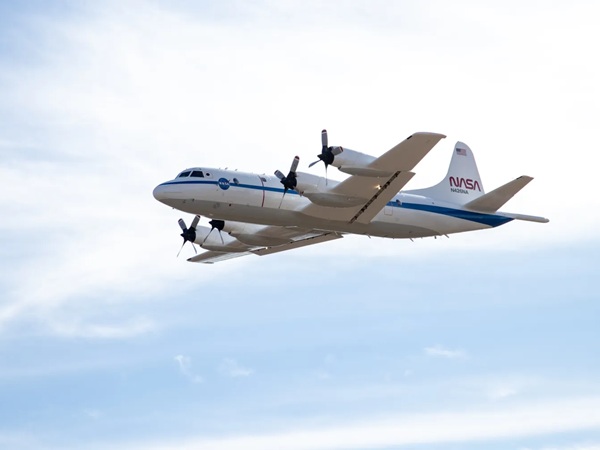BALTIMORE, MD—Two NASA research aircraft will be making low-altitude flights over parts of the Mid-Atlantic and California from Sunday, June 22, through Wednesday, July 2, as part of a student research program, NASA officials say.
The flights, part of NASA’s Student Airborne Research Program (SARP), are designed to collect atmospheric data and provide undergraduate students with hands-on experience in scientific field campaigns.
On the East Coast, flights are being conducted through Thursday, June 26, over Baltimore, near Philadelphia, and in Virginia near Hampton, Hopewell, and Richmond. The West Coast operations will take place from Sunday, June 29, to July 2, over the Los Angeles Basin, Salton Sea and Central Valley in California.
Pilots will operate a NASA P-3 Orion aircraft (N426NA), based out of NASA’s Wallops Flight Facility in Virginia, and a King Air B200 aircraft (N46L) at lower altitudes than typical commercial flights. The specialized maneuvers will include vertical spirals between 1,000 and 10,000 feet, circling above power plants, landfills and urban areas to collect air samples. The flights will also feature occasional missed approaches at local airports and low-altitude flybys along runways for surface-level air sampling.
The P-3 Orion is a four-engine turboprop equipped with a six-instrument science payload, supporting 40 hours of SARP science flights on each coast. The King Air B200 will fly a separate, independent profile simultaneously with the P-3. Students participating in the eight-week summer internship will assist in operating the science instruments to gather atmospheric data.
“The SARP flights have become mainstays of NASA’s Airborne Science Program, as they expose highly competitive STEM students to real-world data gathering within a dynamic flight environment,” said Brian Bernth, chief of flight operations at NASA Wallops.
Bernth emphasized the complexity and precision required for these flights. “Despite SARP being a learning experience for both the students and mentors alike, our P-3 is being flown and performing maneuvers in some of most complex and restricted airspace in the country,” he said. “Tight coordination and crew resource management is needed to ensure that these flights are executed with precision but also safely.”
Photo: NASA/Garon Clark


